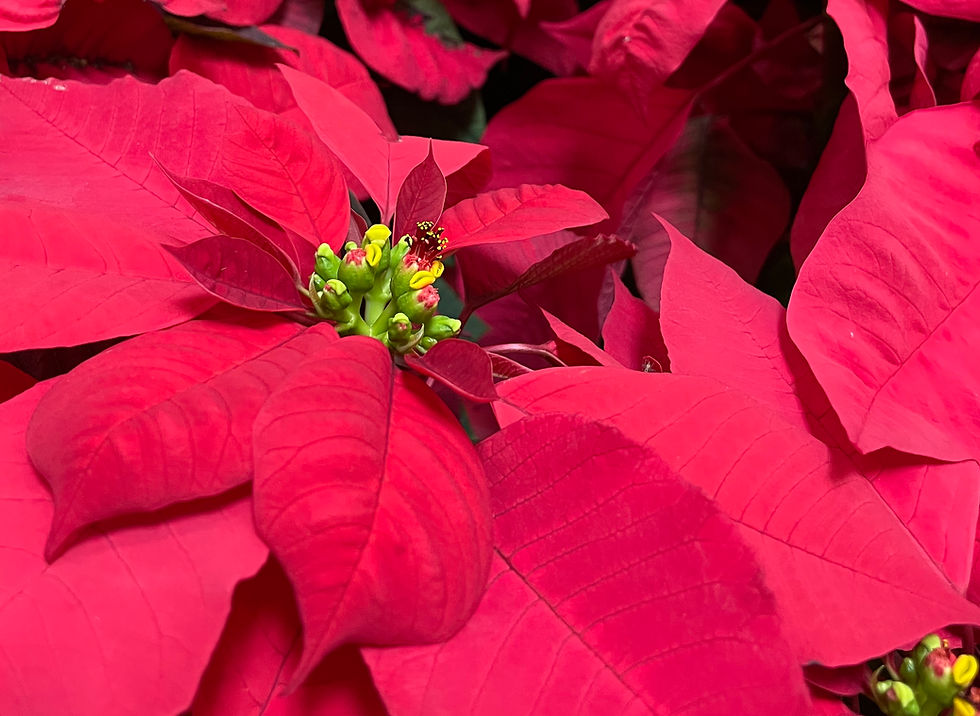Anita’s Blog – A Gentle Overcast Sky
- jjvanm
- May 22, 2022
- 4 min read
Updated: May 23, 2022
I saw a colorful quarter moon just before dawn, it was tilted to spill, sitting vertical in the sky over the roof of the house; I thought no more about it.
A couple of hours later, I heard the rain crow rattle, but it stopped before ending with the usual knock, knock, knock. I noticed the humidity was so thick it was rolling off my skin in rivulets.
All three of these clues tell me it’s going to rain – if I choose to believe.
As I sat at the computer, I thought of another local clue – I raced out of the house to check the ebony tree – the tree that tells the farmers it’s going to rain because it blooms BEFORE a rain. Yes, there are hundreds of buds on our ebony tree – but no blooms.

Cobwebs in the grass mean rain. I didn’t see any in the grass, but a big, old in-ground asparagus fern was covered in cobwebs, I noticed, as I walked back from the budding ebony tree. And then, as I approached the house, the winds shifted, coming out of the north now.
Ok, with so many signs, I’m hopeful for rain. As a last resort, I checked my phone’s weather app and it was totally disappointing – but perhaps not accurate, my optimistic mind countered.
Superstitions are fun. Every country, indeed, every culture, probably has its own ancient superstitions for predicting the weather. Like, birds and bugs flying low mean a storm is coming. Restless chickens foretell a storm. My moth sheet was unusually thick with flying visitors at 4 a.m. And they were restless. There was hardly an empty space on the sheet; bugs and moths were stacked on top of each other. Tiny flyers were hitching a ride on a dragonfly’s wings.


In Iceland, the song of the plover predicts the weather: a staccato song predicts rain, while a more trilling song indicates sunshine. I’ve never noticed our plovers on the beach as being vocal.
Birds on a utility wire predict the coming of rain – obviously not locally, considering the nightly muster of grackles on the wires above Valley streets. If a cat washes behind its ears, expect rain. If a rooster crows at night, it will rain by morning.
My prediction: it will either rain or it won’t.
Superstitions aside, this has been a banner week for bugs being attracted to my moth sheet and black light. Earlier this year, I attended a writing workshop via Zoom. The on-demand writing task was to write about an important or famous Texan, or famous Texan brand, or tree, plant or animal that is Texan.
At the time, I’d been going through bug photos and had a memory of one that seemed to be named after that iconic figure: the Texas cowboy. I copied a photo of the bug to the top of my Word document and began to write:
“With thighs like dung-colored chaps, this bow-legged Texan isn’t running to jump on a horse and ride hell-for-leather after bank robbers. It’s a bug; a big and unique-looking bug named Texas Bow-legged Bug. It can leap small obstacles and land heavy-footed on all six with a loud pop and swagger across the parched white wasteland of the cloth moth sheet, looking like trouble. It stopped, angled its head this way and that, eyes bugged out (no pun intended) with antennae as big as a Stetson.”

After this week’s haul with the moth sheet, I can now say I’ve seen more bugs that look like they have bigger Stetsons than the Texas bow-legged bug and they’re just as much Texan. They’re longhorn beetles – called such because their antenna are longer than the length of their body.
Whereas the Texas bow-legged bug (Hyalymenus tarsatus) feeds on a variety of plants, like euphorbias, seed pods of legumes and milkweeds, we’re encouraged to embrace these big fellas, according to Texas A&M literature, because they are generally found in small populations and seldom cause crop damage.
Longhorn beetles, however, give me pause. The longhorn beetle, Enaphalodes taeniatus, attacks citrus in the lower Rio Grande Valley. Some species of longhorn beetles use mesquite, huisache, ebony, acacia, elm hackberry and citrus as larval host plants.

Longhorn beetles, when found outdoors, are a beneficial species responsible for decomposing dead or injured trees – returning nutrients back into the soil. They are in the family Cerambycidae (Longhorn beetles family); there are 443 species of cerambycids recorded from Texas and some 35,000 species described worldwide.
Other longhorn family beetles attracted to the moth sheet lately are Achryson surinamum, also wood-boring insects whose habitat is any sort of deadwood at night and a twig girdler beetle (Oncideres cingulate) tentatively identified on www.iNaturalist.org or possibly a mesquite girdler beetle (O. rhodosticta).


Oncideres is a genus of longhorn beetles containing more than 120 species – a species widely known to cause damage to specific trees, like pecan, hickory, oak, poplar and elm in the first case and mesquite in the second.
Eburia ovicollis deposit their larvae in mesquite.

All known longhorn beetle larvae feed on plant tissue, such as stems, trunks, or roots of both herbaceous and woody plants, according to Wikipedia. A few species are serious pests and can cause extensive damage to either living trees or untreated lumber.
A saving grace, longhorn beetles have predators: mantises, lizards, spiders, frogs, some birds, scorpions, antlions, assassin bugs, dragonflies and hornets. I can also hope these fall under the same theory as the Texas bow-legged bug: they don’t abound in great numbers.
The Bug Guide information annotates that longhorn beetles are attracted to lights at night; I can attest they are attracted to the black light moth sheet set up.





